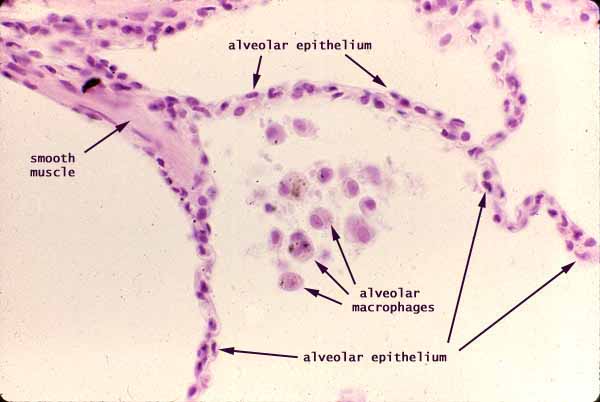

Lung alveoli

Alveolar walls separate adjacent air sacs (the large empty areas in the image).
- Each alveolar wall has a simple squamous epithelium lining each exposed surface, with a thin stroma of capillaries and delicate supporting connective tissue sandwiched in between. These details cannot be clearly resolved in this image.
- Flat nuclei in the alveolar wall represent either Type I pneumocytes (squamous cells) or capillary endothelium. Round nuclei may represent Type II pneumocytes (surfactant-secreting great alveolar cells).
Monocytes from circulating blood can crawl out of the alveolar capillaries,
cross the alveolar epithelium, and enter the alveolar air space.
- These alveolar macrophages, or dust cells, can then crawl over the free surface scavenging dust particles and bacteria that have been inhaled. Ingested material can accumulate in lysosomal vesicles and become visible as lipofuscin granules.
- Eventually, these macrophages may re-enter the blood or ascend the airways where ciliary action carries them up the trachea until they are swallowed with mucus.
Comments and questions: dgking@siu.edu
SIUC / School
of Medicine / Anatomy / David
King
https://histology.siu.edu/crr/CR018b.htm
Last updated: 1 February 2023 / dgk